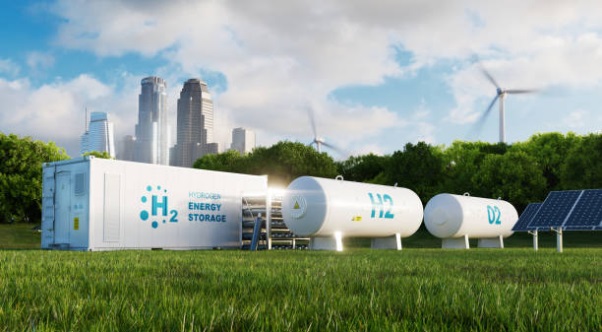In the quest for a more sustainable and eco-friendly energy future, green hydrogen has emerged as a promising contender. This clean and versatile fuel is generated through a process that produces zero emissions, making it a critical player in reducing our carbon footprint. In this 500-word blog article, we will explore the production of green hydrogen and its diverse applications.
Production of Green Hydrogen
Green hydrogen is produced through a process called electrolysis. Unlike conventional hydrogen production methods, which typically rely on fossil fuels, this process uses renewable energy sources to split water molecules into hydrogen and oxygen. Here’s how it works:
Renewable Energy Input: The first step in producing green hydrogen is to harness renewable energy sources like solar, wind, or hydropower. These sources provide a clean and sustainable source of electricity.
Electrolysis: The renewable electricity is then used to power an electrolyzer. Inside the electrolyzer, water (H2O) is separated into its constituent elements: hydrogen (H2) and oxygen (O2).
Hydrogen Storage: The produced hydrogen can be stored in various forms, such as compressed gas or liquid, for later use.
This production process is entirely emissions-free, as the only byproduct is oxygen. As the world moves towards decarbonization, the production of green hydrogen holds immense potential.
Applications of Green Hydrogen
Green hydrogen has a wide range of applications across various sectors, making it a versatile and sustainable energy carrier:
Transportation: Hydrogen fuel cells are being used to power vehicles, including cars, buses, trucks, and trains. These fuel cells convert hydrogen into electricity to propel the vehicle, emitting only water vapor as a byproduct. Hydrogen-powered vehicles offer longer ranges and shorter refueling times compared to electric vehicles, making them suitable for heavy-duty transportation.
Energy Storage: Green hydrogen can be used for energy storage, helping to balance the intermittent nature of renewable energy sources like wind and solar. Excess electricity generated during periods of high renewable energy production can be used to produce hydrogen. This hydrogen can then be stored and converted back into electricity when needed, providing a reliable and stable energy supply.
Industrial Processes: Industries such as steel, chemicals, and refineries often rely on hydrogen for various processes. Switching to green hydrogen in these sectors can significantly reduce carbon emissions associated with their operations. Green hydrogen can be used as a clean feedstock for industrial processes or as a fuel for high-temperature heat applications.
Power Generation: Green hydrogen can be burned in gas turbines or used in fuel cells to generate electricity. This application is particularly useful in areas where renewable energy sources are abundant but intermittent. By storing excess energy as hydrogen, power generation can be more stable and reliable.
Residential and Commercial Heating: Hydrogen can be used for heating in residential and commercial buildings. Hydrogen boilers and fuel cells can provide space heating and hot water while emitting only water vapor, reducing greenhouse gas emissions associated with traditional heating methods.
Aviation and Maritime: Green hydrogen is being explored as a potential fuel for aviation and maritime transport. Hydrogen-powered aircraft and ships have the potential to reduce emissions significantly in these high-pollution sectors.
Challenges and Future Outlook
While green hydrogen shows immense promise, there are several challenges to its widespread adoption. These include the high cost of electrolysis equipment, the need for a reliable and abundant supply of renewable energy, and the development of efficient storage and transportation infrastructure for hydrogen.
However, ongoing research and investments are gradually addressing these challenges, and the future looks promising for green hydrogen. Governments and industries worldwide are recognizing its potential as a clean energy carrier and are committed to its development.
In conclusion, green hydrogen represents a vital piece of the puzzle in the transition to a sustainable and low-carbon energy future. Its clean production process and diverse applications across sectors such as transportation, energy storage, and industry make it a powerful tool in the fight against climate change. As technology advances and economies of scale are realized, green hydrogen has the potential to play a pivotal role in reducing our reliance on fossil fuels and building a greener, more sustainable world.







